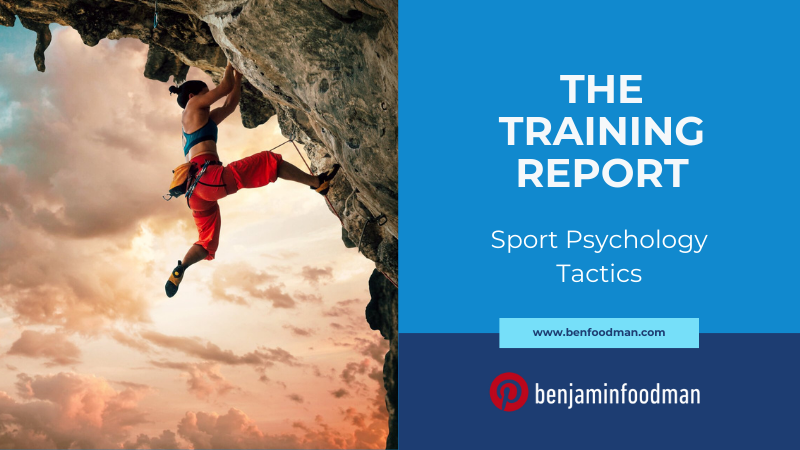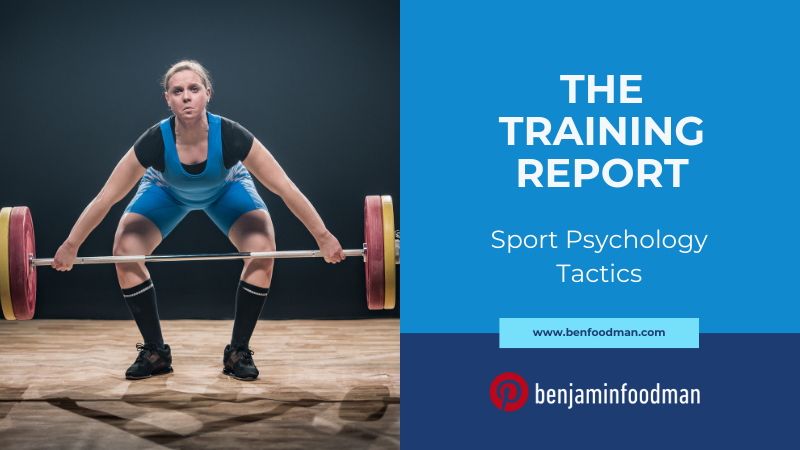Sport Psychology Tactics - Brainspotting Mental Training For UFC, Brazilian jiu-jitsu & MMA Athletes To Beat The Yips And Focus
About the Author
Ben Foodman is a licensed psychotherapist & performance specialist. He owns his private practice located in Charlotte North Carolina where he specializes in working with athletes to help them overcome mental blocks (the yips), PTSD, ADD / ADHD and achieve flow states through the techniques of Brainspotting & Neurofeedback. If you are interested in services, use the link here! Enjoy the article below!
Introduction: How Sport Psychologists Mentally Train UFC, Brazilian jiu-jitsu (BJJ) & MMA Athletes
Athletes competing in mixed martial arts may very well be some of the most mentally tough athletes on the planet. These individuals have to process vast amounts of data, make lightening fast decisions while being physically attacked by some of the most dangerous humans on the planet. Individuals that compete in these sports understand that they are putting their bodies and minds at risk, yet continue to voluntarily engage in these sports enthusiastically. A consistent psychological feature that these individuals appear to exhibit is the ability to disassociate from intense pain. While these athletes can do this at a high level, like all humans this will eventually take a toll on these individuals.
In my opinion, sport psychologists and mental performance consultants have no business trying to help these athletes improve on their ‘mental toughness’. Almost all of these professionals have absolutely no personal concept of what it would take to mentally compete in this space, so why would any advice in this area help the MMA athlete? It wouldn’t. But if sport psychologists and mental performance consultants have extensive training in trauma-informed therapy approaches like Brainspotting, they can help this athlete population potentially clear mental blocks, avoid the Yips, and get back to competing mentally unobstructed. For this issue of the Training Report I want to review how this type of mental training can help MMA athletes.
Part I. Introduction: Mental Training Considerations For UFC, Brazilian jiu-jitsu (BJJ) & MMA Athletes
As I have previously mentioned, there is absolutely nothing that sport psychologists or mental performance coaches will be able to offer MMA athletes in the way of ‘mental toughness’ training, that is unless the sport psychologist themselves was previously an athlete in that sport. Odds are, that would be a tough individual to find access to, which means that professionals that operate in the field of sport psychology need to focus on helping these athletes employ trauma-informed interventions that can help them overcome mental blocks or the Yips. Why is this the case? Athletes that compete in the UFC, BJJ and other MMA sports are exposed to what are referred to as shock-trauma events. These events include the following: severe injuries that require surgery such as broken bones, torn muscles, etc. Experiencing multiple concussions, training at such intense levels that the immune system is compromised, seeing teammates get seriously hurt, etc. How does this connect with sport psychology?
When athletes go through the previously mentioned experiences, there is a type of built-in ‘hardware’ and ‘software’ in the brain that is present in all humans from day one. This hardware and software becomes highly activated when humans exceed their individual stress-threshold. There may be some athletes reading this that think they are nowhere near their stress-threshold tolerance, but the problem with this type of thinking is assuming that you will know when you reach your ‘red-line’. No one knows when they will reach their breaking point, or even when they are approaching it. When athletes do reach this psychological state, the results can be happen abruptly and violently. One of the common symptoms that that will occur during this psychological state is what is referred to as the Yips. The Yips are a psychological phenomena that are a type of mental block which results from unprocessed trauma. The Yips can create ‘freeze’ responses or inexplicable disruptions in sport movement patterns. To better understand this mental state, we need to dig into the neuroscience of the Yips.
Part II. The Neuroscience Driving Combat Sport Athletes Yips
The first thing we need to understand about the Yips and mental blocks that occur as a result of trauma, is that the trauma experienced in MMA is actually a type of learning experience. In the book The Biology Of Desire, the author goes into detail about how this learning process occurs in the brain: In fact, brains are supposed to change. Brain change-or neuroplasticity-is the fundamental mechanisms by which infants grow into toddlers, who grow into children, who grow into adults, who continue to grow. Brain change underlies the transformations in thinking and feeling that characterize early adolescence. In fact, developmental neuroscientists estimate that ‘as many as 30,000 synapses may be lost per second over the entire cortex during the pubertal/adolescent period. Brain change is necessary for language acquisition and impulse control in early childhood, and for learning to drive a car, play a musical instrument, or appreciate opera later in life. Brain change underlies religious conversion, becoming a parent, and, not surprisingly, falling in love. Brains have to change for learning to take place. Without physical changes in brain matter, learning is impossible. Synapses appear and self-perpetuate or weaken and disappear in everyday learning. Learning alters the communication patterns between brain regions and builds unique configurations of synapses (synaptic networks) that house knowledge, skill, and memory itself. The connection between learning and brain change has been studied for more than a hundred years: it was reasonably well understood by the 1940’s, and the search for specific cellular mechanisms continues today.
The author continues: Whether repairing the damage caused by a minor stroke or altering emotional processes in the wake of trauma, neuroplasticity is at the top of the brain’s resume’. To repeat: proponents of the disease model argue that addiction changes the brain. And they’re right. It does. But the brain changes anyway, at every level: gene expression, cell density, the concentration and location of synapses and their fibers, even the size and shape of the cortex itself. Of course, neuroscientists who subscribe to the disease model must know that brains change with learning and development. So they must view the brain change that accompanies addiction as extreme or pathological. In fact, they would have to show exactly that in order to be convincing. They would have to show that the kind (or extent or location) of brain change characteristic of addiction is nothing like what we see in normal learning and development, or even in the more extreme transitions people go through when they fall in love or have children. But that’s where they step onto thin ice. The kind of brain changes seen in addiction also show up when people become absorbed in a sport, join a political movement, or become obsessed with their sweetheart or their kids. The brain contains only a few major traffic routes for goal seeking. Like the mina streets of a busy city, the same routes get dug up and paved over time and time again, no matter who’s in charge. Brain disease may be a useful metaphor for how addiction seems, but it’s not a sensible explanation for how addiction works. Even though a significant portion of this excerpt is rooted in the discussion of addiction, much of the same science is also based in trauma-informed perspectives. With that being said, when MMA athletes go through the learning experiences associated with sports such as trauma, the brain will inevitably adapt in negative ways.
In the book This Is Your Brain On Sports by David Grand, the author goes into detail explaining what happens in the brain that causes trauma-based responses such as the Yips. Per the author ‘In parallel fashion, the brain attempts to always move toward a state of psychological equilibrium. Over the course of our lives, we are exposed to a variety of life experiences, some positive, some neutral, and some negative. Through a natural assimilation process, the brain adaptively processes these experiences so they are constructively integrated. What is useful from the experience is learned and stored in the brain with the appropriate emotion and is available for future use. When an experience is successfully assimilated or digested it is stored in the brain with little attached intense emotion or physical sensation. When we recall such an incident, we don’t reexperience the old emotion or sensation with it. In this way we are informed by our past experiences and memories but not controlled by them and with sports our present athletic performances are not burdened by emotional or physical baggage from the past, only learned experience. By contrast, trauma or any strongly negatively charged experience isn’t adequately assimilated or processed. Instead, the upsetting incident remains stuck in the system in broken pieces’.
The author continues, ‘ The body instantly memorizes the physical experience of the trauma in exquisite detail, including the body sensations of the impact and pain, along with the associated sights, sounds, smells and tastes. The attached emotions and where they are felt in the body are frozen as well. The brain is overwhelmed and instead of getting digested, all of the information attached to the injury, including the negative thoughts is stored in the brain in exactly the same form it was initially experienced. Days, week, months or even years later when the athlete is in a situation reminiscent of the original trauma or experiences prolonged stress, the upsetting experience may be unconsciously activated, thus interfering with the performance of the moment. These components represent all of the sensory details from the earlier event that were frozen in the brain and body in their original disturbing state: the images, lighting, emotions, physical movements, sounds, or smells. The unique sensory details later returning to consciousness cause the performance disrupting symptoms so common in mental blocks.’ In addition to Dr. David Grand, there are many other renowned experts that support this theory as well.
In the book The Body Keeps The Score, Dr. Bessel Van Der Kolk goes even deeper explaining how the mechanisms of the brain respond to stress, which in turn create the symptoms of the Yips: the emotional brain has first dibs on interpreting incoming information. Sensory information about the environment and body state received by the eyes, ears, touch, kinesthetic sense, etc. converges on the thalamus where it is processed and then passed on to the amygdala to interpret its emotional significance. This occurs with lightning speed. If a threat is detected, the amygdala sends messages to the hypothalamus to secrete stress hormones to defend against that threat. The neuroscientist Joseph LeDoux calls this the low road. The second neural pathway, the high road, runs from the thalamus via the hippocampus and anterior cingulate, to the prefrontal cortex, the rational brain, for a conscious and much more refined interpretation. This takes several microseconds longer. If the interpretation of threat by the amygdala is too intense, and/or the filtering system from the higher areas of the brain are too weak, as often happens in PTSD, people lose control over automatic emergency response, like prolonged startle or aggressive outbursts. So now that we have reviewed the basic science that helps us understand the inevitable nature of mental blocks as a result of sport-related trauma, what type of mental training can MMA athlete use to stay ahead of the Yips issue and remain competitive? My preferred choice is Brainspotting.
Part III. Brainspotting Mental Training Strategies UFC, Brazilian jiu-jitsu (BJJ) & MMA Athletes Use To Focus & Beat The Yips
An intervention that I believe is the most effective form of mental training is Brainspotting. Brainspotting is a brain-based psychotherapy technique that utilizes the client’s field of vision to identify unresolved psychological issues. In Brainspotting we say ‘where you look affects how you feel’ and through this process clients have the ability to access the parts of their brain that traditional psychotherapy approaches such as cognitive behavioral therapy are unable to do. This results in clients being able to directly address the true ‘underlying’ issue (which we refer to as a Brain Spot) that has created conflict allowing individuals to move from needing to constantly cope, to not needing to cope at all. Brainspotting can be used to help anyone who is dealing with mental blocks, the yips, psychologically traumatic events, chronic pain issues from injuries, as well as individuals who are trying to access deeper levels of creativity or cultivating mental flow states. When we think about the potential issues that combat sport athletes deal with such as concussions, TBIs, witnessing teammates get injured, sport humiliations, sports-injuries, out of sport trauma (e.g. car accidents, interpersonal relationship issues), it can be easy to see why this intervention pair perfectly with this athlete population.
The goal of all psychotherapy interventions are to help clients move from dysregulation to regulation. For instance if a UFC fighter has been experiencing mental blocks such as increased pre-performance anxiety or fear responses, this can be considered a state of dysregulation. Because almost half of the brain is dedicated to vision, we use the clients field of vision combined with focused mindfulness to help engage the regions of the brain that are responsible for regulation and bypass the regions that are not! This physiological approach can help clients achieve their desired psychological outcomes. When athletes work with a sport psychologist who uses Brainspotting, they will first identify what the issue is that they would like to resolve. These issues can range from experiencing pre-performance nerves in sports, to having anxiety about performing in front of large crowds. Clients discuss the issue in-depth and then the sport psychologist invites clients to have their eyes follow a pointer that the clinician will move in certain directions to identify the eye position that is relevant to the topic that the client is looking to resolve. Once the eye position is identified, the client will hold that eye position for either several minutes up to two hours potentially until the issue is resolved.
Note To Reader:
If you are an athlete reading this segment of the TRAINING REPORT, hopefully this content was helpful! I put the Training Report together because I felt like many of the discussions on issues such as the Yips/mental blocks, strength training & other subject matter on athlete performance concepts were really missing the mark on these ideas (e.g. how trauma is the direct cause of the Yips). If you are interested in learning more, make sure to subscribe below for when I put out new content on issues related to sport psychology & athlete performance! Also, if you are looking to work with a mental performance specialist, you are in the right place! USE THIS LINK to reach out to me to see if my services are the right fit for your goals!
ARE YOU ON THE LIST?
Make sure you’re signed up to Ben’s mailing list to receive news & updates on new strategies in sport psychology, upcoming workshops & products. Don’t wait, sign up now!

















































































